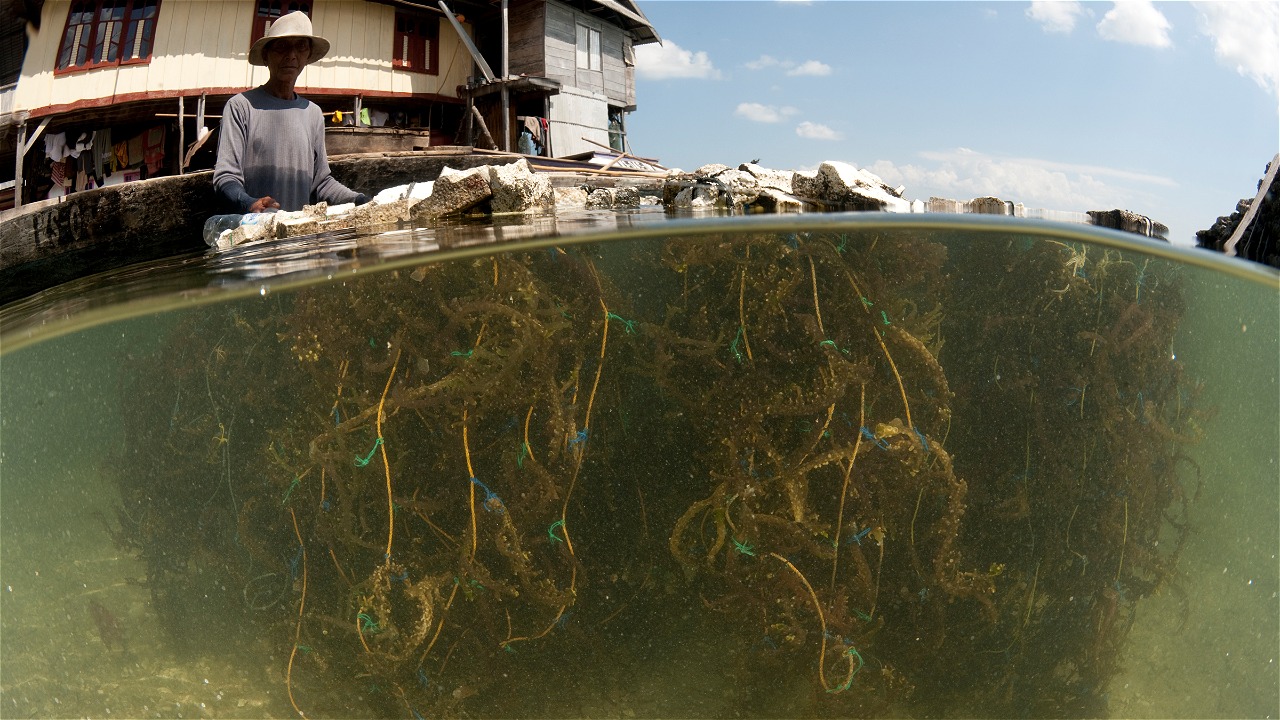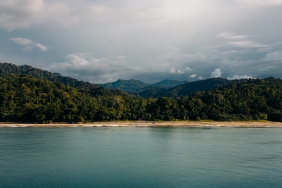NAI ISLAND, A STRATEGIC LOCATION FOR IMPROVING KOTONI SEAWEED FARMING PRACTICES
By Faridz Rizal Fachri
Nai Island is one of the islands of the Kei Kecil Islands cluster in Southeast Maluku Regency. The island, which is located closest to the core zone of the Kei Kecil Island Park (TPK) conservation area, has many kotoni seaweed (Kappaphycus alvarezii) cultivation areas that spread to the northern part of Hoat Island.
The cultivation process on Nai Island can be done throughout the seasons, including the west and east seasons. The production of Kotoni seaweed cultivation on Nai Island with a total of 71 households can reach 272.64 tons/year or equivalent to 3.3 percent of the total seaweed production of Southeast Maluku Regency in 2014. With its cultivation potential, strategic location close to the core zone, and community, Nai Island has strong bargaining power to be the location of the Aquaculture Improvement Program (AIP) assistance process for the Kotoni seaweed commodity.
The implementation of the cultivation process on Nai Island is carried out by groups of farmers formed by the Southeast Maluku Marine and Fisheries Service (DKP). These groups are expected to receive assistance and capacity building in accordance with the AIP application for kotoni seaweed commodities.
AIP, Improved Cultivation Practices
In 2013, WWF-Indonesia established JARING Nusantara (JARNUS), which aims to assist producers at the fishermen and farmer level in conducting best practices for the capture and breeding of seafood products, including kotoni seaweed. These assistance measures include working with DKP, formally established farmer groups, and other JARNUS institutions. AIP implementation and community enterprise development will be the focus of future assistance.
Various aspects continue to be pursued to achieve improvements in seaweed farming practices, such as the implementation of manual audits, preparation of AIP work plans; implementation of Better Management Practices (BMPs); data recording (log book) of seaweed production; curriculum development for capacity building, activation, and organization of groups; and development of the seaweed business itself. These efforts are in line with TPK-Kei Kecil's conservation mission of sustainable marine and coastal resource management.
Also download the seaweed farming practice guide here




